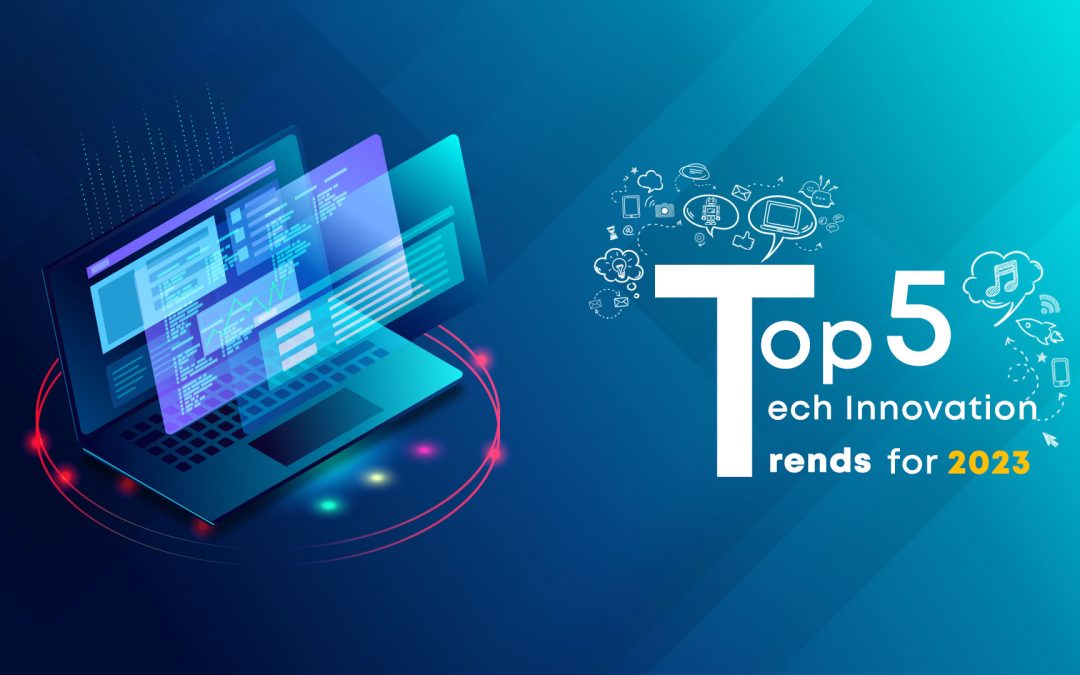Even with the development of new technologies, innovation in the application of existing technology is rapidly changing how organizations operate and how we interact with the world. This change is being accelerated by advances in computing capacity, data capture, and connectivity. Here are five trends to look out for in 2023 and beyond.
IT trends to stay up to date on!
Artificial intelligence
AI is about machines with human characteristics completing tasks while also “learning” from repeated interactions. Machines can perform dangerous or tedious tasks more accurately or quickly than humans by using algorithms that adapt to location, speech, or user history.
According to US research and advisory firm Gartner, within a few years, all software will use AI at some level. Importantly, AI provides the opportunity to continuously tailor products and services, providing a competitive advantage over competitors that is difficult to replicate.
Augmented reality
Real-time 3D vision, sound, haptics (the sense of touch), location data, and even other senses such as smell enable people to immerse themselves in another world, react to what’s around them, and change their virtual environment in real time. Organizations are increasingly incorporating this technology into a wide range of human activities, including art and entertainment, commerce, education, and the military. It’s used to train doctors, nurses, teachers, and police officers, and it’ll be available on your smartphone soon.
Blockchain
Digital currency’s fortunes Although Bitcoin has sparked public interest in Blockchain technology, this secure system for recording and verifying transactions and storing trusted records has the potential to disrupt businesses of all sizes. Blockchain technology is being used by businesses to transform time-consuming, centralized, less reliable, and less secure systems. MyVote, a digital democracy platform, uses Blockchain to store users’ data and voting history, giving citizens a more direct voice in the political process.
Automation
Manufacturing robots date back to the 1960s. The scale and breadth of the transformation made possible by automated systems, for example, as a result of other advances in machine learning and connectivity, places automation firmly at the forefront of technology trends. Automation will be a key focus of technological change, with potentially far-reaching economic and social consequences, ranging from convenient devices at home to industrial applications on a massive scale.
Professional services, such as the legal and finance industries, are currently being disrupted by automation, with feedback from these industries indicating that core technical skills, as well as management and people skills, are more important than ever.
Internet of Things
Gartner refers to the “intelligent digital mesh” as the combination of technologies and the connection of people, devices, content, and services. This is the foundation for new business models, platforms, and possibilities that will transform how we live and work, with far-reaching implications that extend far beyond technology and include disciplines such as law, economics, business, and politics.
Although the application of IoT strategy is still in its early stages, opportunities will exist for those with technical knowledge to connect platforms as well as those with data analytics skills to utilize the rich stream of information generated by IoT applications.
In conclusion, the top five tech-innovation trends for the coming year include artificial intelligence, virtual and augmented reality, the Internet of Things, automation, and blockchain technology. These trends are shaping the way we interact with technology and are making significant impacts on various industries, from healthcare to finance. It is important for businesses and individuals to stay informed and adapt to these developments in order to stay competitive in the ever-evolving tech landscape. Stay tuned for updates on these trends and how they will continue to shape the future.
 Finland
Finland Bangladesh
Bangladesh
